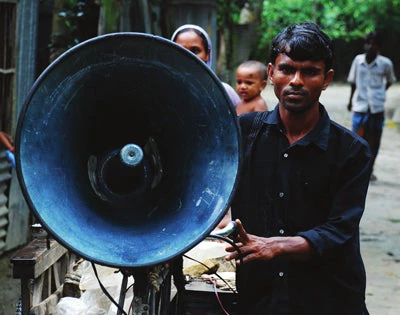By Francis Ghesquiere, Head of the GFDRR Secretariat, & Robert Reid, DRM Specialist, GFDRR

We’re pleased to see that the proposed goal of the HFA2 zero draft recognizes the need to prevent the creation of new risks. This is the only realistic way to gradually tame the continuous increase in disaster loss observed in recent decades. This is particularly true in developing countries where we will see billions of dollars invested in expanding cities, in new schools and new homes. To avoid putting people at risk, we must first make sure that this infrastructure is built in the right places and using resilient standards.
The reduction of accumulated risk is also acknowledged and important. Not every home or every school can be retrofitted, but millions of lives could be saved with better early warning and enhanced response systems, improved drainage and strengthened infrastructure. Much progress has been achieved over the last decade, but a lot remains to be done. In this process, we must ensure that sufficient attention is given to the plight of the most vulnerable who are invariably also the most exposed.
Resilience is also about the ability to bounce back. An important missing element of the HFA2 zero draft’s goal is the need to strengthen the capacity of communities to recover from disasters. Contingency plans and financing mechanisms, coordinated response systems, build-back-better policies, and tailored safety net systems are a few examples of measures that can help societies recovery faster and better from adverse events. In September, more than 30 country representatives participating in the second World Reconstruction Conference signed a joined declaration calling for recognition of the need to strengthen the emphasis of resilient recovery in the new framework.
With these goals well established, the HFA should set clear priorities. The zero draft makes a good effort by listing four key priorities, but it could probably be strengthened by unpacking them further. For example, we would recommend separating Preparedness from Recovery and Reconstruction. Actions and actors involved in both differ significantly. The drafting committee may also wish to include a new priority on Reducing the Financial Impact of Natural Disasters. The few references to financial protection and insurance are currently scattered across the document. We believe that the specific nature of financial protection activities warrants a stand-alone priority.
The calendar year 2015 will see the convergence of several important international processes. It is important to consider how the HFA2 fits into the broader international system, and link it to the Sustainable Development Goals (SDGs) and post-2015 climate change agreements. This is because the SDGs will become the main drivers of the development agenda, while in the case of climate change climate risk is and will continue to be a major driver of disaster loss. Actions referenced in the HFA2 framework, particularly under the Understanding Disaster Risk priority, should reference the need to understand disaster risk under future climate scenarios.
In the end, all this work is geared towards saving lives and avoiding loss, particularly in the poorest and most vulnerable communities. The poor generally live in exposed areas, have a low capacity to adapt, and bear the greatest adverse impacts from disaster risk and climate-related disasters. The current framework needs to place stronger emphasis on the needs of the poor and the role of DRM in reducing inequality.
We look forward to supporting the HFA2’s ongoing development and its finalization in Sendai next March.
Photo: Testing disaster warning systems in Bangladesh. Amir Jina/Flickr Creative Commons


Join the Conversation